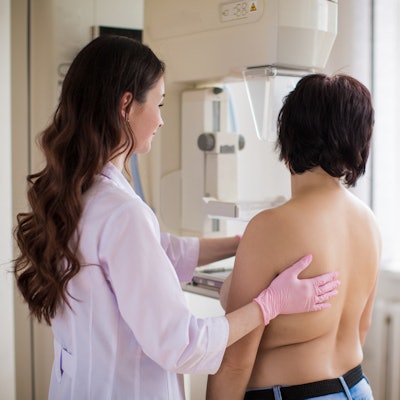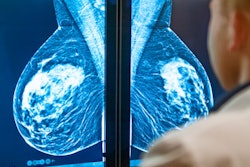
A new study by Australian researchers questions whether breast cancer screening with digital mammography translates to better outcomes than film-screen mammography. The group published its work June 23 in the Journal of the National Cancer Institute.
The study adds fuel to the long-standing debate over mammography's efficacy and prompts the question of whether technological advances in breast screening must continue to be evaluated even after they've been taken up into mainstream clinical practice.
"A new screening technology should be at minimum as efficient, and ideally have an improved effect, on health outcomes as compared to the existing technology," wrote a group led by Rachel Farber of the University of Sydney in New South Wales.
The U.S. Food and Drug Administration (FDA) cleared digital mammography for market in 2000, responding to data that suggested that its results were more specific than those found on film-screen mammography and would therefore reduce recalls, find more cancer, and lead to fewer interval cancers, Farber's team wrote. Early studies comparing film-screen and digital mammography didn't show an overall difference in cancer detection rate between the two, but they did show increased cancer detection in women with dense breast tissue, those younger than 50, and those who were premenopausal, the group noted.
Yet the two modalities' comparative performance hasn't been closely tracked over the years, Farber and colleagues noted. So the team performed a literature review of 24 studies that included 16.5 million screening exams (10.9 million film-screen and 5.6 million digital). The studies compared film-screen and digital mammography within populations of asymptomatic women; the researchers assessed cancer detection, recall, and interval cancer rates.
The authors found a 0.51 increase per 1,000 scans in cancer detection rate with digital mammography, with a greater increase in detection of ductal carcinoma in situ (DCIS) compared with invasive cancer. But they also found that digital mammography led to an increase in the recall rate by seven recalls per 1,000 scans. The cancer detection increase didn't translate into a reduction of interval cancers, according to the authors.
| Performance differences after transition from film-screen to digital mammography | ||
| Metric | Difference per 1,000 screens | Relative risk difference |
| Screen-detected cancers | 0.51 | 10% |
| Screen-detected DCIS | 0.22 | 25% |
| Screen-detected invasive cancers | 0.19 | 4% |
| Recalls | 6.95 | 12% |
| Interval cancers | -0.02 | 0% |
Digital mammography makes it easier to store and handle images, but it doesn't appear to have dramatically improved health outcomes for women, Farber said in a statement released by the university.
"While the transition from film to digital may have been beneficial for technological reasons and for efficiencies in service screening, our research shows the increase in cancer detection was largely attributable to more detection of ductal carcinoma in situ, with little difference in invasive cancer detection," she said. "At a time when new mammography and other imaging technologies are proposed for adoption in population screening, it is critical to carefully consider and evaluate the effect this could have on health outcomes."



















